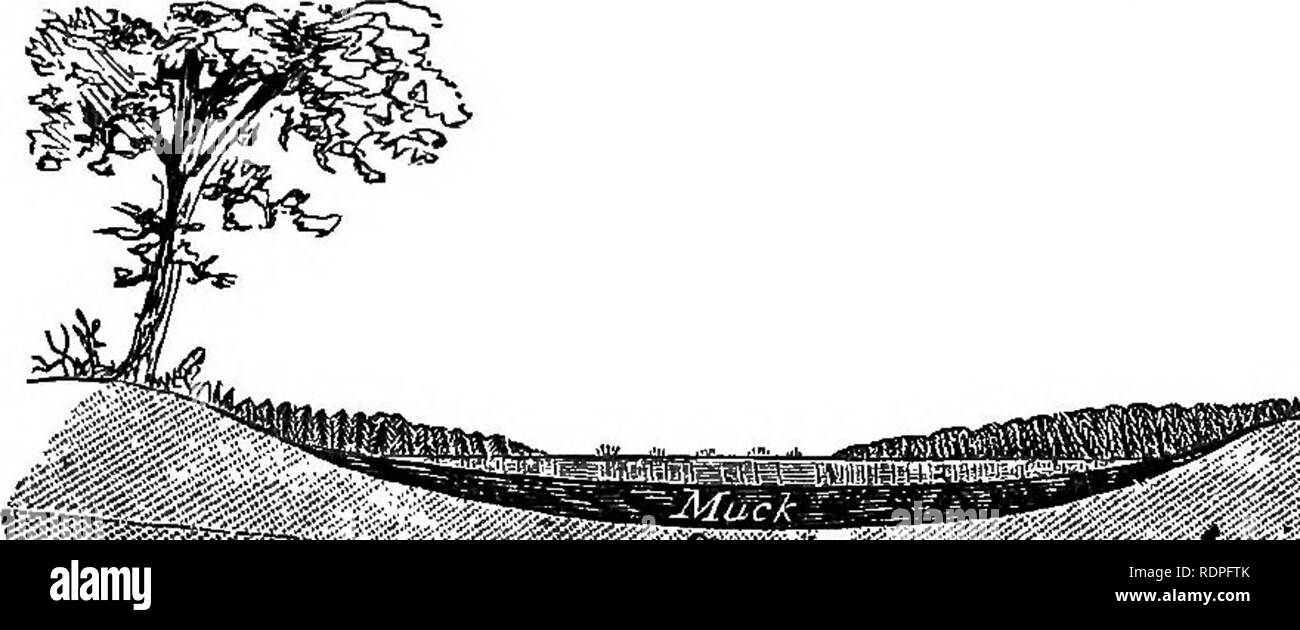. Cranberry culture. Cranberries. 30 CEANBBERT CULTTJEE. the presence of other plants, requiring similar conditions of soil and moisture, indicate a soil congenial to the growth of the cranberry. For instance, the Feather- leaf, also called Gander-bush, and Leather-leaf {Cassan- dra calymlata) (fig. 5), so abundant in heath ponds, is considered a sure indication of a proper locality. The Ground Laurel (Kalmia angustifolia) thrives upon land that will produce cranberries — sometimes profitably—^but such should not be chosen for a perma- nent meadow, it being generally too dry. Vines, planted up

Image details
Contributor:
The Book Worm / Alamy Stock PhotoImage ID:
RDPFTKFile size:
7.1 MB (281.6 KB Compressed download)Releases:
Model - no | Property - noDo I need a release?Dimensions:
2451 x 1019 px | 41.5 x 17.3 cm | 16.3 x 6.8 inches | 150dpiMore information:
This image is a public domain image, which means either that copyright has expired in the image or the copyright holder has waived their copyright. Alamy charges you a fee for access to the high resolution copy of the image.
This image could have imperfections as it’s either historical or reportage.
. Cranberry culture. Cranberries. 30 CEANBBERT CULTTJEE. the presence of other plants, requiring similar conditions of soil and moisture, indicate a soil congenial to the growth of the cranberry. For instance, the Feather- leaf, also called Gander-bush, and Leather-leaf {Cassan- dra calymlata) (fig. 5), so abundant in heath ponds, is considered a sure indication of a proper locality. The Ground Laurel (Kalmia angustifolia) thrives upon land that will produce cranberries — sometimes profitably—^but such should not be chosen for a perma- nent meadow, it being generally too dry. Vines, planted upon these lands, become matted in a few years, produce' one or two crops, and then assume a woody, or dead ap.. * // / c^-J>' ' Fig. 4.—SECTION Ol' HEATH POND. pearance, —and this is especially the case if they are not submerged during winter. A soil producing the Upland Huckleberry must always be avoided, as it becomes parched or dried up in summer. Swamp lands, upon which the White Cedar, or Juniper, the Maple, Swamp Huckleberry and Magnolia thrive, are frequently selected. It is in these that the deep deposits of muck are found, and, when properly prepared, they make lasting and valuable meadows. N". H. Bishop says: " Gum-swamp bottoms are to be avoided, as the presence of the gum-tree {N'yssa multi- flora) denotes a cold, springy soil, which would require an. Please note that these images are extracted from scanned page images that may have been digitally enhanced for readability - coloration and appearance of these illustrations may not perfectly resemble the original work.. White, Joseph J. New York, O. Judd co.